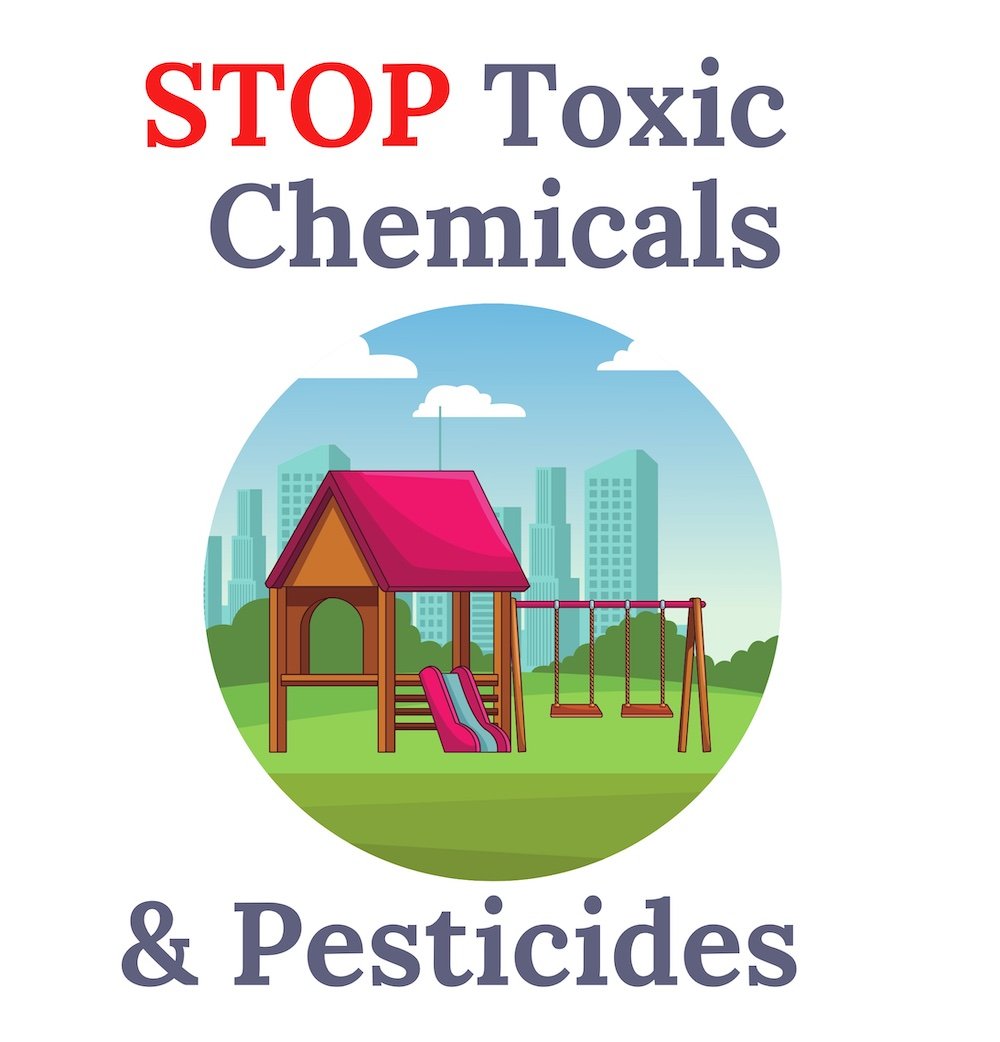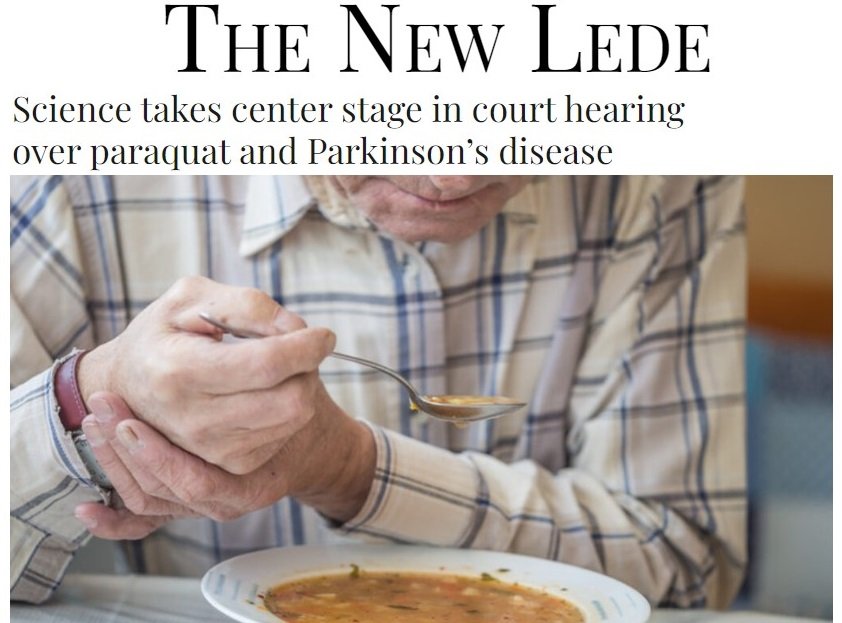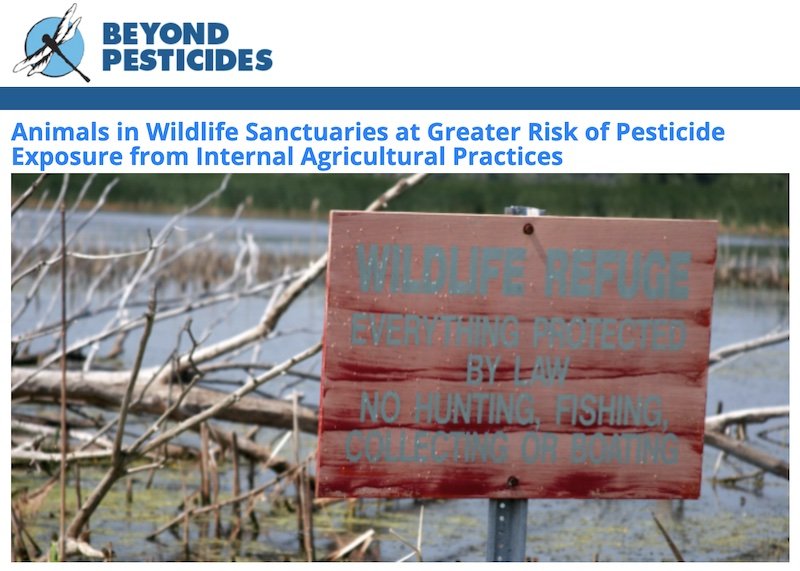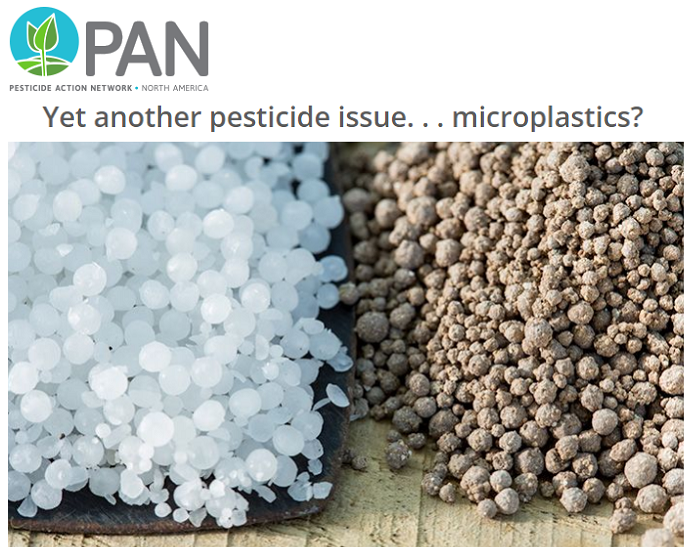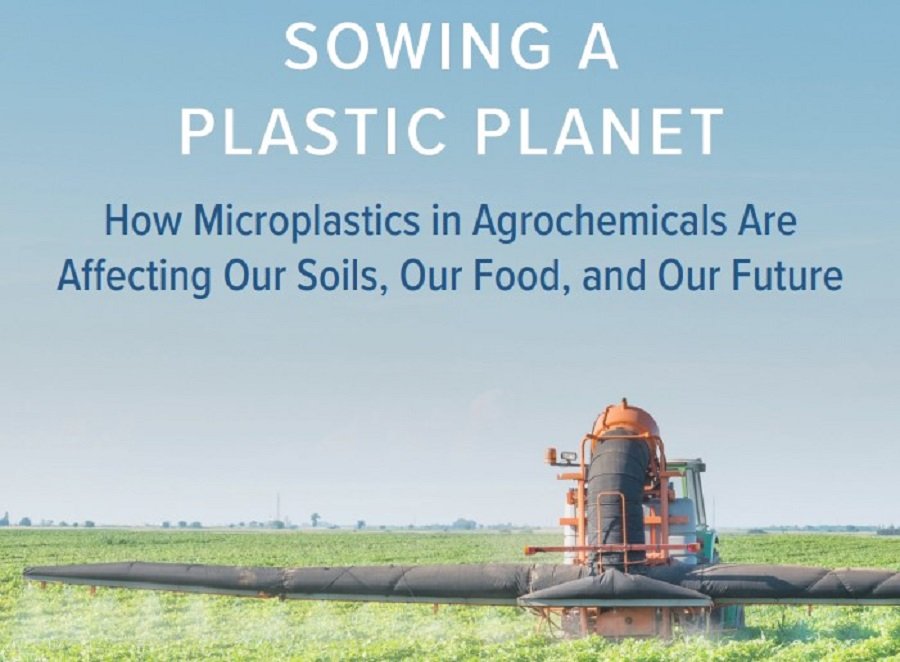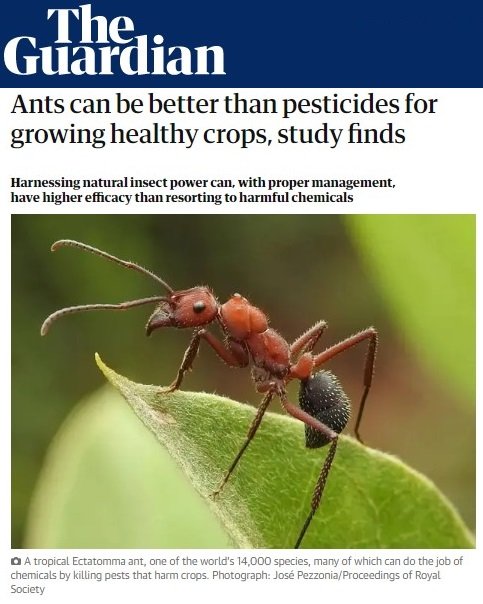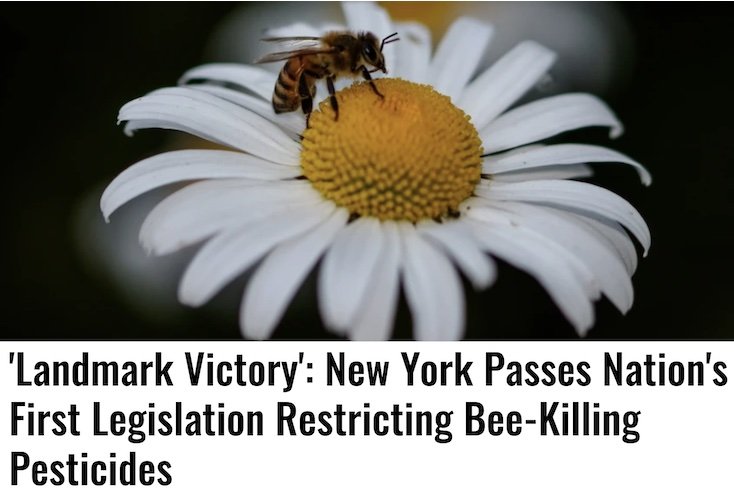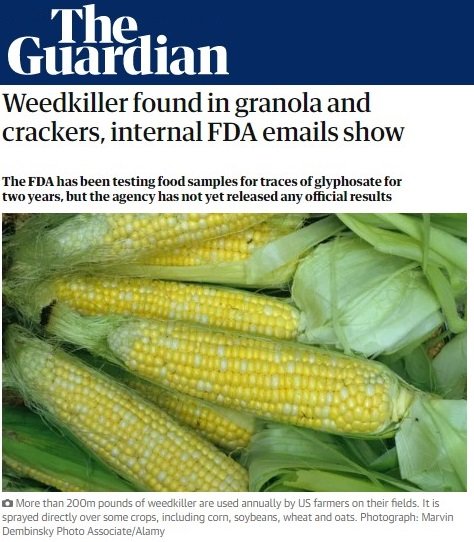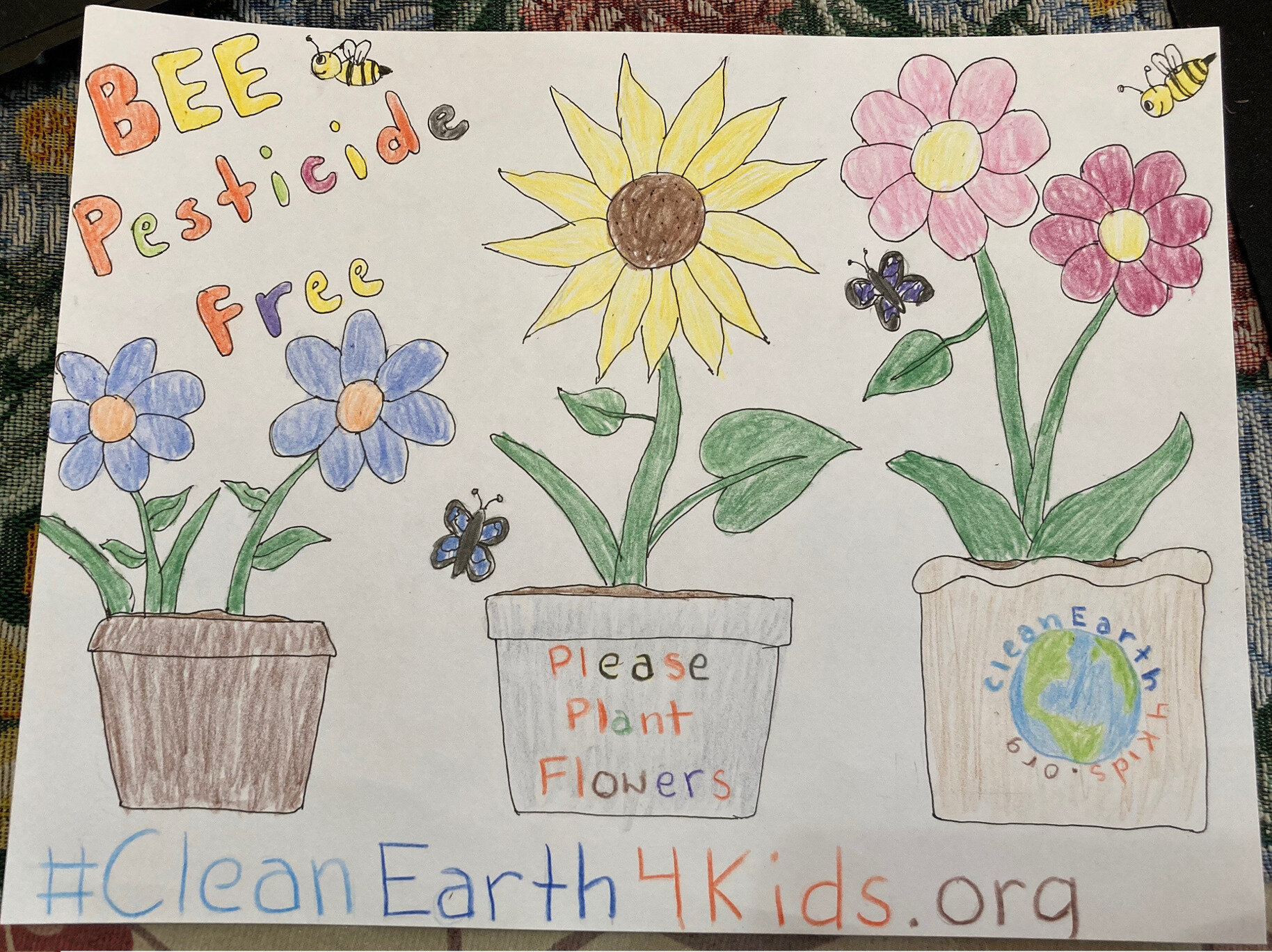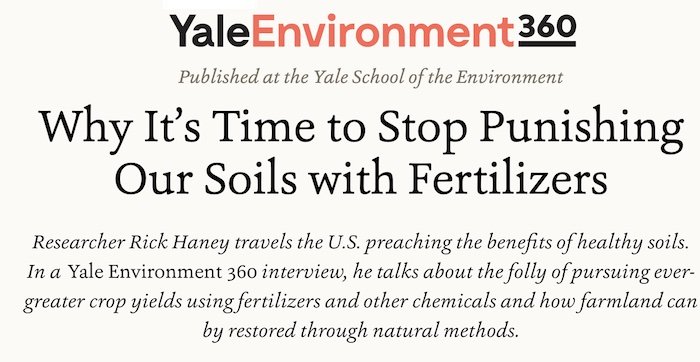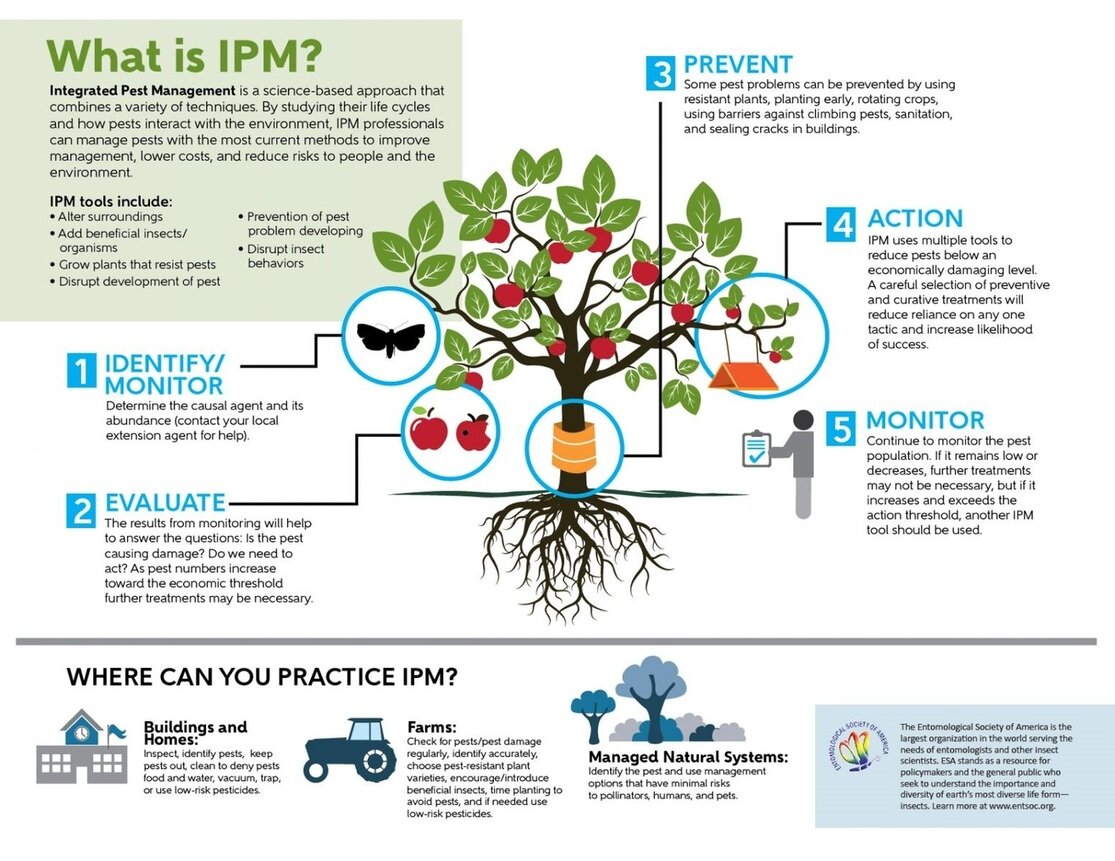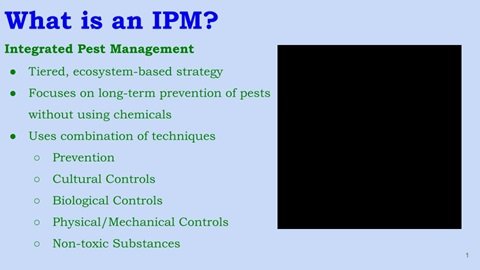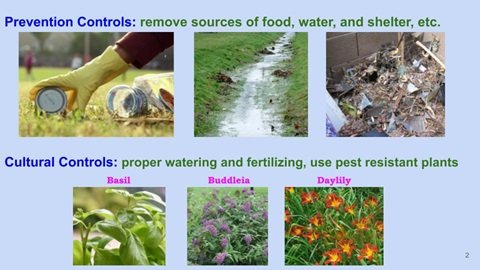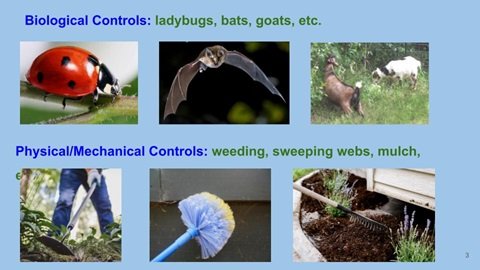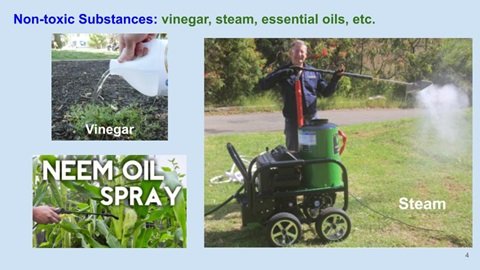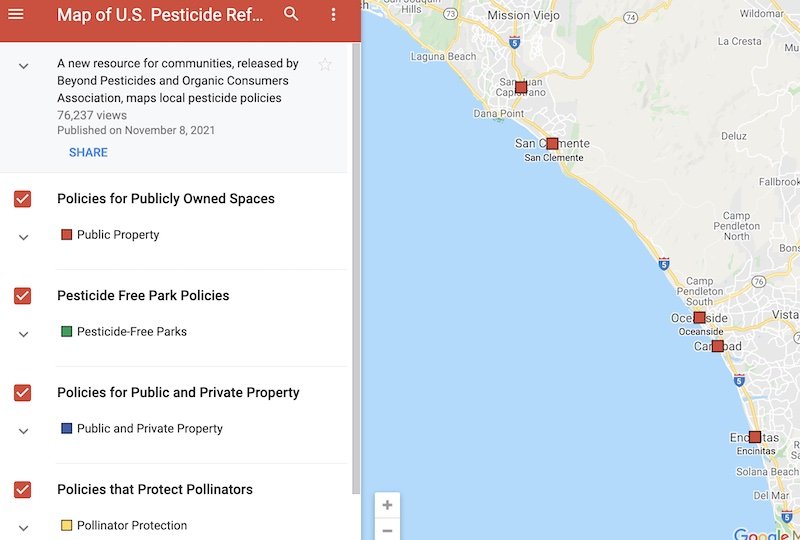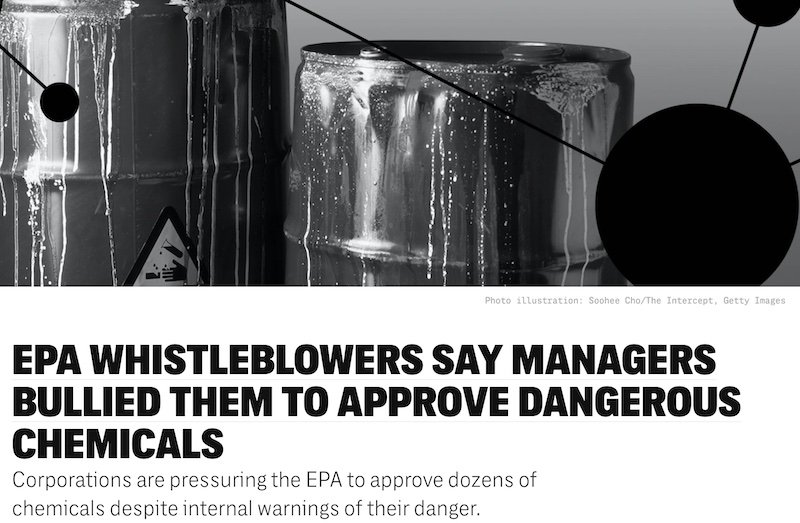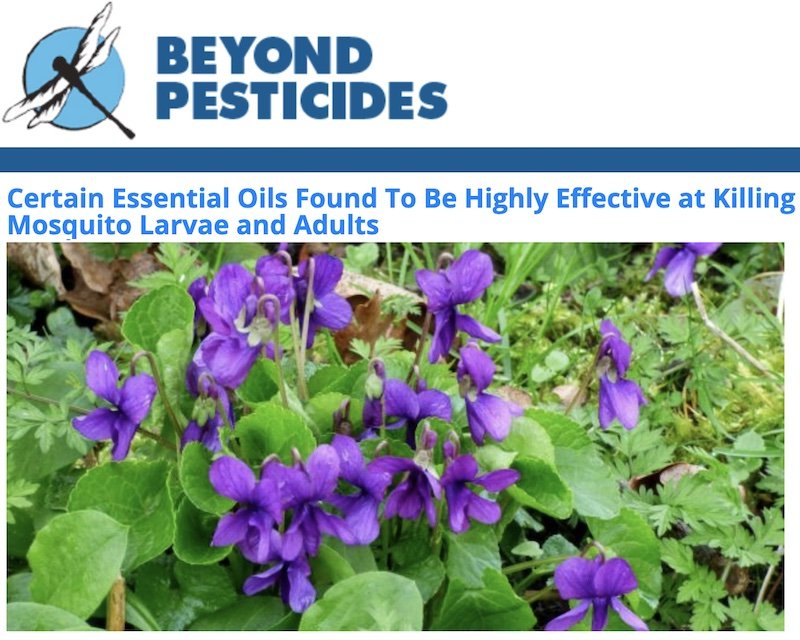Team 5: Stop Toxic Chemicals & Pesticides
*Click on Links Below:
*How To Have A Pesticide Free Park Video
*Integrated Pest Management (IPM)
*Pesticides Harm Health Soils
*Pesticide, Chemical and Pollution Research Tools
*How EPA Fails to Protect from Toxic Pesticides & Chemicals
*Nontoxic Weed Control
*Nontoxic Bug Control & Repellents
*What are Pesticides?
Glyphosate (RoundUp)
*Stop Toxic Chemicals & PFAS
*Regenerative Farming, Permaculture, Agroecology, Organics & Healthy Soil
*Get the Lead Out
*Synthetic Turf Toxic Chemicals
*Actions You Can Take
*Bills to Support
The USA allows toxic pesticides banned in other countries to be used in our schools, parks, homes, gardens, food…
Approximately 1/3 of the annual USA pesticide use, over 300 million pounds from 85 different pesticides, are from pesticides banned in the European Union.
“Evidence is great and growing that environmental exposures, and especially exposures to manufactured chemicals, are in fact important contributors to childhood cancer. Children today are surrounded by an estimated 350,000 manufactured chemicals and chemical mixtures.”
“Leukemia incidence in the United States has increased by 21% since 1976…
brain cancer incidence by 45%…
Cancer is now the leading cause of death by disease among American children under the age of 15 years.”
“…researchers found that a 10% increase in pesticide mixtures was associated with a significant rise in certain pediatric cancers:
Brain and other CNS childhood cancers increased by 36%
Leukemia rates in children and adolescents increased by 23%
Overall pediatric cancer rates increased by 30%
The findings raise concerns about the long-term health impacts of pesticides on children, particularly in agricultural regions, and add to growing evidence that pesticide exposure contributes to childhood cancer, including retinal cancer (retinoblastoma).
Early-life pesticide exposure has also been linked to lower cognitive function, adverse birth outcomes, and behavioral issues.
“Our results demonstrate the importance of evaluating chemical mixtures while studying pediatric cancer risk,” they conclude
“The monitoring stations detected a total of 19 different pesticides in the air samples, including the herbicide pendimethalin and the fumigant 1,3-dichloropronene (Telone), which have both been linked to cancer.”
“Despite being banned in 34 countries, Telone is the third-most heavily used pesticide in California, and CDPR has been criticized for failing to implement regulations that adequately protect mostly Latino farmworkers from the chemical.”
“The samples were all collected on school grounds, raising concerns among environmental and health advocates about safety risks for children and other vulnerable community members.”
“She told the medical staff she worked in farm fields, but no one informed her that dozens of agricultural poisons increase the risk of cancer or that strawberry growers use copious quantities of particularly toxic, drift-prone pesticides on the soil before planting.
These fumigants are also used on other row crops and orchards, but strawberry growers apply them in the greatest quantities. One of their favorite fumigants—1,3-dichloropropene, also known as 1,3-D or Telone—causes tumors in multiple organs and glands in rodents, including mammary glands…. California listed 1,3-D as a carcinogen in 1989, yet it remains the state’s third highest-volume pesticide.”
“…the burden of this pollution falls disproportionately on immigrants with limited English proficiency—people who make up a large proportion of the agricultural workforce. “
“In the three Census tracts with the most intensive applications of 1,3-D from 2018 to 2022…there were more than twice as many people born in Mexico and other parts of Central America and with limited English skills than in the state as a whole. These tracts also had around twice as many children aged 17 or younger, who are particularly vulnerable to toxic exposures.”
The Pest Management Regulatory Agency (PMRA) of Health Canada reversed it’s 2016 ban of the neonic imidacloprid in 2021 and has ignored the hazards of glyphosate after “working” with the manufacturer, Bayer.
PMRA “protects the pest industry more than it protects Canadians” (quote from Bruce Lanphear on his resignation from the Science Advisory Committee).
“Many of the pesticides covered by the agreement are linked to birth defects, significant reproductive harms, and certain cancers in people, particularly farmworkers who are in direct contact with these toxic chemicals,” said Sylvia Wu, attorney for Center for Food Safety, counsel for the plaintiffs in the case. “After decades of inaction despite these terrible harms, as a result of our lawsuit EPA is now committed to much needed steps to protect farmworkers and the public from the potential endocrine-disrupting harms of pesticides.”
“The profiling is part of an effort – that was financed, in part, by US taxpayer dollars – to downplay pesticide dangers, discredit opponents and undermine international policymaking, according to court records, emails and other documents obtained by the non-profit newsroom Lighthouse Reports.”
“The revelations demonstrate how industry advocates have established a “private social network” to counter resistance to pesticides and genetically modified (GM) crops in Africa, Europe and other parts of the world, while also denigrating organic and other alternative farming methods.”
“The revelations demonstrate how industry advocates established a “private social network” to counter resistance to pesticides and genetically modified (GM) crops in Africa, Europe and other parts of the world, while also denigrating organic and other alternative farming methods. More than 30 current government officials are on the membership list of the private network, most of whom are from the US Department of Agriculture (USDA).”
“Montrose used above-ground storage tanks to store its acid waste, according to the EPA. Tanker trucks then transported the waste to the Port of Los Angeles and pumped it into barges. Finally, the barges were towed to the disposal site off the Palos Verdes Peninsula, where the waste was dumped.”
“In April 2021, scientists from UC San Diego’s Scripps Institution of Oceanography released a survey that found more than 27,000 barrels of unknown contents at depths of up to 3,000 feet and across 36,000 acres of seafloor off the Palos Verdes Peninsula.”
“From 2004 to 2015, over 2 billion pounds of pesticides have been used in California, with the most recent numbers indicating an annual use of 209 million pounds. Though it represents only 2-3% of total U.S. cropland, the Golden State uses up to 20% of all pesticides employed in the U.S.”
“The EPA noted in 2002 that 635 miles of waterways crossing the Central Valley were compromised by agricultural pesticides, rendering the water unsafe for fishing, swimming, or drinking. Moreover, runoff from cultivated land that reaches the Sacramento and San Joaquin rivers can contaminate drinking water sources serving millions of Californians, including urban areas like San Francisco, Los Angeles, and San Diego.”
“EWG’s analysis identified 61 pesticides sprayed in Ventura County that are linked to cancer, 77 pesticides that may harm the nervous system, 75 pesticides that may interfere with the hormonal system, 46 pesticides that may cause harm to the thyroid, and 88 that alter development or reproduction in laboratory animals.”
“Almost 70 percent of homes in Ventura County are within 2.5 miles of agricultural pesticide use.”
“More than one in four homes are a half-mile or less from fields sprayed with pesticides that have been linked to serious health harms, including cancer, neurotoxicity and harm to development and reproduction.”
“33 elementary schools in the county are within a quarter-mile of farming operations where pesticides are sprayed.”
“Pesticide spraying in or around wildlife refuges threatens the survivability and recovery of species that inhabit the area.” “These pesticides include dicamba, 2,4-D, glyphosate, and paraquat, which are highly toxic to fish, amphibians, crustaceans, and other animals—causing everything from birth and reproductive defects to cancer.”
Adopt the Malibu IPM
City of Malibu, CA Earth Friendly Management: the gold standard Integrated Pest Management (IPM) plan. No pesticides or synthetic fertilizers allowed!
“The deliberate dispersion of microplastics in the environment through the application of plastic-coated fertilizers and pesticides is one of the most direct and preventable sources of growing microplastic pollution in agricultural soils.
The use of plastic-coated synthetic fertilizers and pesticides is rising, with producers marketing their “controlled-release” function as a key to sustainable, climate-friendly agriculture.
Encapsulating agrochemicals in plastic and spreading them across soils and crops only compounds the significant health and environmental risks posed by agrochemicals and may exacerbate their harmful impacts.”
“…99% of all synthetic chemicals —including pesticides — are derived from fossil fuels, and several oil and gas companies play major roles in developing pesticide ingredients.”
“Inert ingredients can increase the ability of pesticide formulations to affect significant toxicologic end points, including developmental neurotoxicity, genotoxicity, and disruption of hormone function. They can also increase exposure by increasing dermal absorption, decreasing the efficacy of protective clothing, and increasing environmental mobility and persistence. Inert ingredients can increase the phytotoxicity of pesticide formulations as well as the toxicity to fish, amphibians, and microorganisms.”
“Pesticide registration should require full assessment of formulations. Evaluations of pesticides under the National Environmental Policy Act, the Endangered Species Act, and similar statutes should include impact assessment of formulations. Environmental monitoring for pesticides should include inert ingredients. To enable independent research and risk assessment, inert ingredients should be identified on product labels.”
“In conclusion, these results show that most herbicide formulations tested in this study are more toxic than their active ingredients in human tissue culture cell model systems.”
“The results add to a growing body of evidence, which implies that commercial herbicide formulations and not just their active ingredients should be evaluated in regulatory risk assessment of pesticides.”
“EPA’s Office of Inspector General said the environmental agency broke with its own procedures and standards of transparency in downgrading the cancer risk classification of 1,3-Dichloropropene…”
‘That decision during the Trump administration in 2019 changed an assessment in place since 1985 that 1,3-D is “likely to be carcinogenic to humans.”'‘
Save lives! Stop synthetic pesticides and fertilizers!
Click the link to the City of Malibu, CA Earth Friendly Management. The Mailibu IPM is the gold standard!
City of Malibu, CA Earth Friendly Management: the gold standard Integrated Pest Management (IPM) plan. No pesticides or synthetic fertilizers allowed!
Turn a dirt lot into a resilient grass playing field using natural ingredients to feed the soil.
No synthetic pesticides or fertilizers! Click on the video below!
Silent Earth: Averting the Insect Apocalypse: Dave Goulson & Anna Lappé talk about the staggering decline in insect populations, why it matters, and the connection between this loss and industrial agriculture. Click here to listen.
“The reason neonics are bad is the same reason they’re used in the first place—to insects, they’re some of the most deadly pesticides ever created. The problem is that they kill indiscriminately, exterminating not only “pest” insects but also countless butterflies, bees, and other wildlife. In fact, since their introduction, neonics have made U.S. agriculture nearly 50 times more harmful to insect life.”
“Pesticide residues were detected in 59% of US food samples tested by the Food and Drug Administration (FDA) in its most recently completed annual testing program, the agency revealed in a new report.
Roughly 77% of domestic fruits, 60% of US vegetables and about 53% of US grains sampled showed residues.”
Glyphosate (RoundUp)
“A new peer-reviewed study…has revealed an astonishingly strong link between severe depression, cognitive decline and exposure to the world’s most used herbicide, glyphosate.”
“In conclusion, our study provides important evidence of an association between…glyphosate levels and adverse neurological outcomes in a representative cohort of U.S. adult population.”
“Oxidative stress is not something you want to have,” said Linda Birnbaum, a toxicologist and former director of the National Institute for Environmental Health Sciences. “This study increases our understanding that glyphosate has the potential to cause cancer.”
“The study findings come after the CDC reported last year that more than 80% of urine samples drawn from children and adults contained glyphosate.”
“US government scientists have detected a weedkiller linked to cancer in an array of commonly consumed foods, emails obtained through a freedom of information request show.”
“But the internal documents obtained by the Guardian show the FDA has had trouble finding any food that does not carry traces of the pesticide.”
Glyphosate is now linked to "autism ... gastrointestinal issues such as inflammatory bowel disease, chronic diarrhea, colitis and Crohn's disease, obesity, cardiovascular disease, depression, cancer, cachexia, Alzheimer's disease, Parkinson's disease, multiple sclerosis, and ALS, among others."
“Writing for a unanimous three-judge panel, Judge Michelle Friedland said EPA’s finding of no risk to human health “was not supported by substantial evidence.” She also ruled that EPA fell short of its obligations under the Endangered Species Act by inadequately examining glyphosate’s impact on animal species and vegetation.”
The USA allows toxic pesticides banned in other countries to be used in our schools, parks, homes, gardens, food…
In 2017 & 2018, the EPA registered more than 100 pesticides with ingredients widely considered to be dangerous.
Approximately 1/3 of the annual USA pesticide use, over 300 million pounds from 85 different pesticides, are from pesticides banned in the European Union.
Pesticides Harm Health Soils
Non Toxic Communities' Online Organic Advocate Training
Click here to register
“…pesticides were found to harm organisms critical to maintaining healthy soils—harms that have never been considered in the EPA’s safety reviews. Pesticide-intensive agriculture and pollution are driving factors in the precipitous decline of many soil organisms, such as ground beetles and ground-nesting bees. They have been identified as the most significant driver of soil biodiversity loss in the past decade.”
Integrated Pest Management (IPM)
Nontoxic Integrated Pest Management (IPM) Plan
A nontoxic IPM is needed in ALL school districts, cities and counties.
IPM is an ecosystem-based strategy that focuses on long-term prevention of pests, or their damage, through a combination of techniques such as biological control, habitat manipulation, modification of cultural practices, and use of resistant varieties without the use of toxic chemicals.
City of Malibu, CA Earth Friendly Management: the gold standard. No pesticides or synthetic fertilizers allowed.
City of Malibu Bans the Use of All Pesticides, Including Insecticides, Rodenticides in the City
City of Ojai, CA IPM. Modeled on Malibu’s Earth Friendly Management.
CleanEarth4Kids Step Up to Protect Children’s Health IPM: Step towards the Malibu IPM
City of Irvine 2021 IPM Report
Click here for list of cities, counties, parks, school districts & universities IPM policies
Click here for California Dept. of Pesticide Regulation (DPR) 2022-2023 School IPM Recordkeeping Calendar. It includes IPM resources like pests monitoring forms, recordkeeping forms and pest identification charts.
“In January 2016, the state of Sikkim…succeeded in becoming the first fully organic state in India…Bee populations are said to be rebounding, with plants dependent on bee pollination like cardamom providing much higher yields. Tourism to the region has also increased nearly 70% since the state went organic…and soil health has rebounded tremendously, as is usually the case when organic methods are applied.”
Pesticide, Chemical & Pollution Research Tools
Beyond Pesticides
Beyond Pesticides: State Pesticide Regulations & Resources
Beyond Pesticide Chemical Research Database: search by active ingredient or product name
Environmental Working Group (EWG)
Environmental and Economic Costs of the Application of Pesticides Primarily in the United States
EPA Environmental Justice Screening and Mapping Tool
EPA Toxics Release Inventory (TRI) Program
Learn about toxic chemical releases and pollution prevention activities reported by industrial and federal facilities
EU Chemical Agency Product Health Data Tool
Health Effects of 30 Commonly Used Pesticides
Pesticide Action Network (PAN) - North America
Pesticide Action Network (PAN) - International
PAN Consolidated List of Banned Pesticides
Pesticide Information: by PAN. Search by active ingredient or product name
How the EPA Fails to Protect Us from Toxic Pesticides & Chemicals
“A new study found the amount of pesticides used on farms was strongly associated with the incidence of many cancers — not only for farmers and their families, but for entire communities.
It comes on the heels of substantial lobbying by the pesticide industry this spring to limit its liability from lawsuits over their products’ health impacts.”
“The American Farm Bureau Federation, one of the most powerful interest groups in Washington, D.C., claims to be the "voice of farmers." In fact, they lobby for corporate agribusiness and speak on behalf of a membership base comprised not of farmers, but of insurance industry affiliates.”
“In 2014, the agricultural input industry alone spent $30 million on lobbying. Monsanto and Biotechnology Industry Organization spent over $12 million combined.”
The American Chemistry Council (ACC) is a petrochemical lobbying group with an annual budget of over $100 million with board members from Dow, DuPont, Marathon Petroleum, and ExxonMobil. The ACC spent $23 million in federal lobbying in 2013-14.
“The ACC has too often worked to obstruct such regulation, following a pattern modeled by the tobacco industry: deny the science, bring in its own experts to counter the evidence, launch misleading advertising campaigns, and pressure decision makers to abandon restrictions on the chemical's use.”
Nontoxic Weed Control
DIY Alternative to RoundUp: 1 cup white vinegar, 2 tbl salt Epsom salt, 2 tsp dish soap
Controlling Weeds on Playing Fields without Herbicides
Elementary School Recruits Chickens to Tackle Cricket Invasion
Example of Tarping to Control Weeds
Guide for Using Goats to Manage Weeds in Urban Public Spaces
Utilizing Goats for Brush Control for Small Farm Sustainability
12 Reasons To Plant a Clover Lawn
Wildflower Planting Project Is Saving Taxpayers Millions in Mowing
Nontoxic Bug Control & Repellents
A few ideas to 🐝Bee 🌼🐝🌼🦋Pesticide Free. Protect you💝👦🐾. To keep spiders, ants... at bay & make your house smell amazing, use 🍊 on countertops.
😊In the back of cabinets... cinnamon sticks or a bottle of cinnamon (lid off). (Or bay leaves 🍃)
😊Closets... cedar blocks, cedar..., peppermint oil directly or cloth pouches or sachets...
😊Corners... peppermint oil or pouches of citronella, lemon grass, rosemary. Block & seal crevices & cracks. Also check door and windows seals, make sure they are tight
🌱🪴Outside, plant mint, lavender, rosemary... in the areas spiders may enter.
😊Spiders are 🐦bird food and essential a part of the food web of life, spiders eat bugs & other spiders.
😊To catch and release a spider, place a glass bowl over the spider and slide a piece of paper carefully underneath the bowl to capture the spider and then place the spider safely outside away from the house.
😊You can also purchase a special tool, a tiny spider vacuum, that supposedly will not harm the spider then place the spider outside.
💝😊🌼And, of course keep kids and 🐾 away from all repellents and tools.
🌼Here are ten plants that are commonly recognized for their mosquito-repellent qualities:
Citronella: Renowned for its strong mosquito-repellent scent. You can crush the leaves to release the fragrance or use citronella oil derived from the plant.
Lavender: Repels mosquitoes due to its floral scent. It also has a calming effect and can enhance relaxation.
Marigold: Contain a natural compound called pyrethrum which is often used in insect repellents. They have a distinct scent that repels mosquitoes and other pests.
Basil: The strong aroma of basil repels mosquitoes and can be planted in pots or garden beds.
Catnip: A member of the mint family, it contains a compound called nepetalactone which is highly effective in repelling mosquitoes. However, be aware that it may attract cats.
Peppermint: Its refreshing scent repels mosquitoes. Crush the leaves to release the fragrance or use peppermint oil diluted in water as a natural spray.
Rosemary: This aromatic herb has mosquito-repellent properties. It emits a strong fragrance that deters mosquitoes and can be grown in pots or in the garden.
Lemon balm: In the mint family, its strong lemon fragrance repels mosquitoes. Crush the leaves to release the scent or use lemon balm oil.
Geranium: Certain varieties of geraniums, such as the lemon-scented geranium have mosquito-repellent properties.
Lemon thyme: This fragrant herb has a citrus aroma. It not only repels mosquitoes but can also be used for cooking.
Please click here for the EWG Guide to bug repellants
Please Click Here for Seasonal Outdoor Cockroach Management Tips
Flea Control
Did you know that simply vacuuming is one of the best ways to control fleas? Research shows vacuuming takes care of 96% adult fleas and 100% of younger fleas!
What are pesticides?
Any chemical intended to destroy a “pest”. They are poisons and hurt much more than just “pests”. We can come in contact with them every day, from the grass we walk on to the food we eat. This constant contact can cause a number of health effects. Pesticides are linked to a range of serious illnesses and diseases from lung problems to cancer.
Common Pesticides
Herbicides (plants/weeds)
Atrazine - one of the most widely used herbicides in the U.S., it is found in 94% of U.S drinking water tested by the USDA - more often than any other pesticide. It is linked to a number of serious health effects including cancer and reproduction issues like low fertility. It has been banned or is being phased out in more than 44 countries. In 2016, the state of California listed atrazine as substance known to cause reproductive toxicity.
Glyphosate - main ingredient in RoundUp. There are over 750 products containing glyphosate. Glyphosate is the most widely used agricultural pesticide worldwide. US farms alone use 300 million pounds of glyphosate per year. Declared by state of California as a carcinogen in 2017. Also linked to endocrine disruption and reproductive effects.
Dicamba -first used in 1967. Linked to developmental and reproductive issues and DNA damage. 5.6 million pounds of dicamba are used annually in the US, with almost 5 million pounds used on corn.
2,4-D - used since 1945. It is the most commonly used pesticide in the non-agricultural market and the 6th most common in agriculture with over 40 million pounds being used in the US annually. Linked to cancer, endocrine disruption, reproductive and neurotoxicity, kidney/liver damage and toxicity to dogs, fish, birds and insects.
Insecticides (insects)
Neonicotinoids - this class of neurotoxic insecticide is the most widely used insecticides in the world. Linked to widespread deaths of pollinators and damage to water life. The 3 most common neonicotinoids are imidacloprid, clothianidin and thiamethoxam.
Chlorpyrifos - an organophosphate insecticide, it was introduced by Dow in 1965. It is the most widely used insecticide on crops, especially for corn, soybeans, broccoli, and apples. Also widely used in non-agricultural settings, like golf courses. Linked to neurological issues in children. For more information, please click Chlorpyrifos: The toxic pesticide harming our children and environment.
Other Pesticide Types
Rodenticides - rodents (rats and mice)
Bactericides - bacteria
Fungicides - fungi
Larvicides - larvae
How Are Pesticide Applied
Fumigation - a pesticide as a gas which completely fill an area. Often used with tarps to treat soil for fungus or a home for termites. The gas can lean out and poison nearby people and animals.
Seed coating - seeds are covered with pesticide before they are planted. The pesticide hurts health by getting into the soil and nearby water sources.
Granules - a pesticide as dried bits which release poison when they get wet. The pesticide hurts health by getting into the soil and nearby water sources.
Spraying - pesticides are sprayed as a liquid from tractors, planes or handheld equipment. Most of the pesticide misses the pest, drifting or evaporating into the air. It also gets into the soil and water, exposing people, animals and insects.
Pesticide Treated Seeds
Click to Read Article
Articles on Pesticides
10 Chemicals or Groups of Chemicals of Major Public Health Concern from the World Health Organization. Arsenic, asbestos, benzene, cadmium, dioxins & dioxin-like substances like PCBs, inadequate/excessive fluoride, lead, mercury, highly hazardous pesticides, and air pollution.
Agricultural Intensification over Last Three Decades Reduces Insect Population by 75%
Bees are Becoming 'Addicted' to the Pesticides Blamed for Wiping Them Out
Exposure to Agricultural Pesticides Increases Brain Cancer Risk up to 20%
5 of The Most Common Pesticides & Their Impact on Your Health
Cities Start to Question an American Ideal: A House With a Yard on Every Lot
Lawsuit against TruGreen Lawn Care for Deceptive Safety Claims
Major Pesticides Are More Toxic to Human Cells Than Their Declared Active Principles
Monsanto’s Big Lie About Roundup and the System That Enabled It
The Monsanto Papers: Poisoning the Scientific Well
What the Monsanto Papers tell us about Corporate Science
Organic Diet Intervention Significantly Reduces Pesticide Levels
Paraquat Papers: How Syngenta’s Bad Science Kept the World’s Deadliest Weedkiller on the Market
Parental Exposure to Pesticides, Risk of Childhood Leukemia and Central Nervous System Tumors
Prenatal and Early-life Pesticide Exposures Associated with Increased Autism Risk and Severity
Reproductive Effects Peak with Pesticide Exposure
Researchers See Health Effects Across Generations From Popular Weed Killer
US Lags Behind EU, Brazil and China in Banning Harmful Pesticides
U.S. Annually Uses 388 Million Pounds Pesticides Banned in the EU, China and Brazil
Pesticide Legislation and Policies
Map of US Pesticide Regulation Reform
California Healthy Schools Act (HSA)
California AB2816: Annual Report on HSA Implementation
Model Policy to Protect Pollinators from Harmful Pesticide Exposures
State of New York Pesticide Management for Schools and Day Care Centers
* Click on Links Below:
* Regenerative Farming, Permaculture, Agroecology, Organics & Healthy Soil
* Integrated Pest Management (IPM)
* Pesticide, Chemical and Pollution Research Tools
* How EPA Fails to Protect from Toxic Pesticides & Chemicals
* Nontoxic Weed Control
* Nontoxic Bug Control & Repellents
* What are Pesticides
* Stop PFAS & Toxic Chemicals
* Get the Lead Out
* Synthetic Turf Toxic Chemicals
